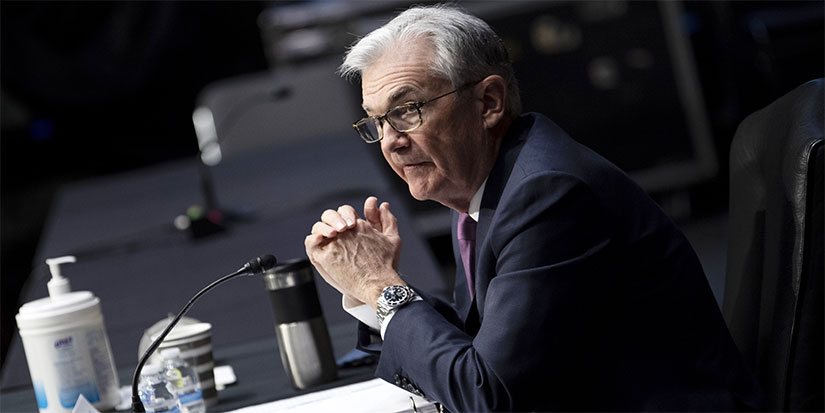
Usurious
-
 Jared Dillian
Jared Dillian
- |
- January 20, 2022
- |
- Comments
Interest rates are a bit higher than they were a couple of months ago. Human sacrifice, cats and dogs living together, mass hysteria! Not yet. But long-duration unprofitable tech and biotech stocks are getting beaten with the ugly stick, while everyone piles into big, ugly value stocks. People expect this to continue for the foreseeable future.
And it probably will. Although sector positioning is getting very crowded on a short-term basis, more so than I’ve seen in a while.
All of this is being driven by the bond market, which came out of the gate in 2022 ripping rates higher. Part of this is being driven by Fed funds expectations, as the Fed is now expected to hike four times this year, and Bill Ackman is agitating for a 50bp hike in March.
So, what is an interest rate? An interest rate is a price, like a price for a bushel of corn. It is the price at which you can borrow or lend money. And it is the most important price in the entire economy, and why we leave this up to unelected bureaucrats is beyond me.
But interest rates are also more than that. They’re the price that balances supply and demand for government bonds. Or, the supply and demand for loanable funds. If more people want to borrow money than lend money, interest rates go up, and vice versa.
Right now, it seems like more people want to borrow money. When it comes to residential real estate, everyone is buying or building homes. We’re talking about hundreds of billions or trillions of dollars of borrowing. Go back about 5–10 years ago, and there wasn’t much demand for borrowing, but there was lots of demand for lending—everyone had piles of cash and was looking for some kind of meager return. That kept interest rates low for a really long time.
Under this framework, it would seem that interest rates are probably going higher. But the important thing to understand about the bond market is that since it’s been starved for yield for so long, 2% on tens is going to look really attractive to some people, and you can expect people to pile into bonds at that level. In the bond trading community, this is known as the “rule of sevens,” where big round numbers in interest rates tend to attract support.
Mortgages
I recently heard the Fed owns 25% of all mortgage-backed securities outstanding. In doing so, it has compressed the option value of a mortgage, bringing down mortgage rates for everyone. In a Fed-free world, mortgage rates would probably be 50–70bp higher. Not that 4% mortgages would be the end of the world, but the marginal house looks a lot less attractive if rates are 1% higher.
Few understand this, but we do not have a very capitalist housing market in the United States. We have government-sponsored enterprises (GSEs) like Fannie Mae, which have a line of credit with the Fed, and can borrow at subsidized interest rates to buy back scads of the mortgage bonds they issued with huge amounts of leverage. The Fed buys mortgages. As a result, people do not bear the true cost of buying a house—without all this support, the average mortgage payment would be $300 higher (my estimate). We’ve tightened things up a bit since the financial crisis, but there are still myriad ways you can get 100% financing on a house, with the risks borne by taxpayers.
If mortgage rates rose to 4%, a couple of things would happen. First, the Fed would have a sizable paper loss on its portfolio of mortgages. I can’t remember if or when the Fed has actually put up an L in the P&L. Second, you would hear squealing about how something must be done about higher mortgage rates. And the government would lean on the GSEs, which are no longer independent companies, to do something about higher rates.
That may be in our future. If 10-year interest rates get to 2.5% or so, we will be knocking on the door of 4% mortgages. For reference, my first mortgage, in 1999, was at 7.25%.
The Call
So far this has been a word salad, and you’re probably wondering what my opinion on interest rates is. Yes, I do think they’ll go higher, in fits and starts, and not in a straight line. A lot of this depends on the speed at which interest rates rise rather than the absolute level. There is a lot of exposure to higher rates in the system. Could we have a repeat of 1994, where rates rip 2% and everything blows up? Could happen. But I think the phenomenon I described, where rates rise slowly, is the more likely outcome.
Conclusion: if you’re buying a house, do it fast.

Jared Dillian
subscribers@mauldineconomics.com

 Jared Dillian
Jared Dillian